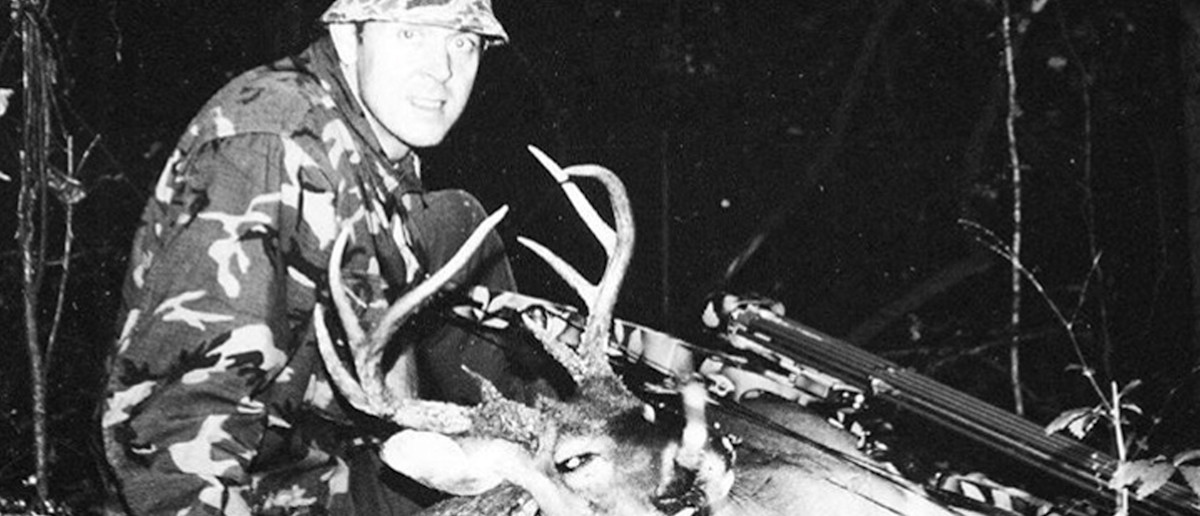
Editor’s note: If you’re new to our DIY Deer Hunter Profile series, here’s the scoop. In each of these pieces, Andy May, a DIY whitetail specialist himself (listen to him on Ep #162 of the podcast), hand picks and interviews the best DIY deer hunters from across the country to help us better understand how they do what they do. After reading today’s profile, be sure to CLICK HERE to see the other hunters Andy has profiled. – MK
By Andy May
Warren Womack has achieved legend status when it comes to deer hunting. He’s a southern hunter who is extremely efficient and successful – having laid to rest several hundred deer, most of which were with bow and arrow. Warren keeps meticulous records of his hunts, has a head full of knowledge and countless hunting stories. He’s also an equal opportunity killer who hunts for his own reasons and never got caught up in the big buck craze or the “look at me” trend many big buck hunters seem to be in nowadays. He’s simply a southern hunter that loves to hunt because it’s in his blood and he flat out gets it done. This is one hunter I would love to sit down and talk to someday and just listen. For now though, let’s dive into some questions to see what makes this guy tick.
Q: Can you give me a little background on how you started out hunting and your journey that has brought you to this point?
A: I don’t think I actually had a choice of not being a hunter. It seemed to be a family tradition. My dad and his brother were lifetime hunters as well as my mother’s six brothers. Through their influence it was a natural progression for me. When I was a kid there wasn’t any deer in our area so all of our hunting revolved around small game. All those years invested in small game hunting was the platform for learning woodsmanship, which includes compass navigation and being comfortable in big woods. I didn’t start deer hunting until I was 24 years old. A very late start compared to today’s standards with it being somewhat common for kids to kill a deer while still being in single digits when it comes to age.
The first deer that I killed was with a rifle in November of 1968. I was hunting in one of the few areas of my home state of Louisiana that had deer in huntable numbers. But, what really hooked me on deer hunting was a bow hunt earlier in that season. I was headed out to bow hunt with a substandard bow and mismatched arrows to try and take advantage of being able to shoot at any deer that made a track, with the exception of a spotted fawn. Even though this was before tree stands I reasoned that I would have a better chance for a shot if I could be elevated. During the late morning I had built a primitive stand out of scrap lumber at an intersection where two obvious trails crossed. That same evening I actually got a 12 yard shot at a big doe that resulted in a hit. I don’t know what I was expecting but I was shocked to see the arrow hit and watch the deer run off taking the arrow with her. I did my best to find that deer, but through my ignorance I had shot the deer with a bow that I shouldn’t have been hunting with as well as a dull broadhead. I hadn’t thought about the need to sharpen the head.
Weeks later I did stumble across the arrow some 200 yards from the shot. This one experience changed my whole life. It was the most exciting hunting event that I had ever experienced, and one that I knew that I wanted to repeat as many times as possible. From that day on I had a burning desire to educate myself about deer and what it takes to put them in bow range for high percentage shots. The process was like serving an apprenticeship. It took me four years to have an understanding for what it was going to take to be a successful bow hunter. Through the following years I was committed to improving my gear as well as developing a hunting style that created the potential for high percentage hunts and success.
Q: I’ve been told that you keep meticulous records of your hunts and kills. Would you mind giving us a few stats?
A: When I first got serious about my hunting I was encouraged by an uncle and a co-worker to take a lot of pictures and record memories of my hunts. I took their advice and have never been sorry. This is my 50th deer season and I’ve never regretted the time and efforts invested in recording my hunts during all of those years. For the first eight years I do regret that my efforts left a lot to be desired. But starting with the 9th season my recordings became more detailed with the passing of each season. Of course this was all hand written. My recordings went to the next level when I got a computer, taking me several years to transfer my journals to computer documents.
It’s amazing the amount of data that can be recorded. Knowing the benefits, I try to encourage other hunters to record their hunts by telling them that “what they can record is only limited by their imagination.” In addition to my written records, I also have pictures from the start and video footage since the 1991 season. All of these recorded events are reminders of hunts that would otherwise be forgotten through the passing of years. I record my kills and data such as the following:
- Deer kill numbers, day of kill, buck/doe, antler points, method of hunt, shot distance, travel distance, area/state hunted, methods of bow and gun kills, annual bow and gun kill totals, bow and gun kill locations, shots taken, shots missed, recoveries, and much much more.
With the exception of the first eight years and this season (I wait until the season is over to update), I know from my records the following:
- I’ve hunted 2,003 days – 1,333 morning hunts – 1,805 evening hunts – 3,372 total bow & gun hunts – 6,300 deer sightings – 1,728 hunts without a deer sighting – 8,447 hours on stand.
- As of this day I’ve hunted 12 states and killed 382 deer. 175 with a wheel bow, 105 with a recurve for a total of 280 bow kills, and 102 with a gun.
I also have a detailed story written of each hunt, illustrated with pictures if the hunt results in a kill.
Q: You hunt in a very unique area. I was able to visit that area over the summer and while flying over it I couldn’t believe the amount of flooded timber and swamps. What has been your technique to finding and hunting quality deer in this type of terrain?
A: South Louisiana has a lot of swamp and marsh land that sees lots of hunting pressure from some excellent hunters that work harder than many could imagine for their kills. But, that’s not the type of areas that I want to spend my time. The only experiences that I’ve had in that type of habitat is spot & stalk hog hunting with a recurve bow in the marsh. And, that was by invitation from a friend that grew up in that area. I’ll have to say that I enjoyed that type of hunting as much and maybe more than what I’m more comfortable with.
My favorite areas consist of hardwood flats, river edges, creeks, sloughs, swamp edges, clear cuts, power lines, pipe lines, light duty hills with main ridges, finger ridges and drainages. I’ve hunted leases as a club member, National Forests, Wild Life Management areas, National Wildlife Refuges and small private properties. I’m always searching for a high percentage hunt to set up on. The sign that indicates what I’m looking for could be a primary feed tree, a creek crossing, a flow area, a funnel, agriculture crops or either just a general area or an observation stand to locate a flow area. I try to scout with an open mind and hunt the very best sign that I can find for the general area that I’m in.
Q: One thing I admire about you is that you didn’t get caught up in the huge antler craze. You have taken some very nice deer but you have also taken deer of smaller sizes. You seem to have stuck to your guns throughout the years and hunted for your own reasons. Can you elaborate a little more deeply on this?
A: For me a shooter buck is a state legal buck and I love to shoot does with a bow. I’ve found the only thing that makes a doe easier to shoot than a buck is that they are more active during the daylight hours. I’ve watched bucks stand like statues for as long as half an hour. They were checking things out. Once they’re comfortable with the situation and decided to move they never hesitate or look around because in their mind everything is safe. Now a doe, she is always looking for buggers to jump out and get her. Really, once I make the commitment to try and kill and I succeed I’m proud of the moment and if it has horns, large or small, that’s just a bonus.
Q: Tell me a little bit about your traditional hunting journey. What made you get started in traditional archery?
A: When I started bow hunting in 1968 the only option was a recurve bow or a longbow. My choice was a Browning Explorer II recurve. I killed my first 17 deer with it. In 1975, three days before a planned trip to Colorado for deer & elk, I got a phone call. It was from a guy with a local backyard archery shop. He offered me the chance to buy one of the three compound bows that he had just received. I had read about the new compound bows, but had never seen one. Without hesitation I told him yes, and was able to get it set up and hunted with it during the Colorado hunt. From the 1975 season through the 1992 season I used four compound bows (Carroll Model 1200, PSE Laser Magnum, Jennings Arrowstar and a High Country Trophy Hunter) to kill 175 deer. I went back to the recurve bow for the 1993 season and used four different recurve bows to kill another 88 (77 with my Acadian Woods bow, 9 with a Damon Howatt Hunter, one with a Bear Grizzly and one with a Black Widow).
My reason for going back was for the simplicity. Even during the years with a compound bow I never got caught up in the advancing high tech stuff that kept coming out. The only reason that I went to a release aid was because the Jennings Arrowstar wouldn’t shoot a clean arrow with a glove like the two previous compound bows did. I was so basic that I actually used a sweat band for a rest on one of the wheel bows and a tooth brush on another one. I like things that are plain and simple and it was just time to come full circle back to the recurve. I haven’t shot a compound bow since the end of the ’92 season.
Q: Are you a purely instinctive shooter or do you gap shoot with a traditional bow?
A: I think of myself as an instinctive shooter but I shoot so fast you would probably call me a snap shooter. I look at the spot that I want to hit, extend my bow arm, point my hand, draw and release as soon as I touch anchor…. or sometimes come close to anchor. Not good, yea I know, but I’ve found the longer that I try to hold the more I start trying to aim without knowing how to aim, and the results aren’t very pretty. My average kill shot is 15 yards. I hit some deer and I miss some deer, but I think that’s something that everyone does if they shoot at enough of them. Besides, shooting targets compared to live deer are two different worlds. I don’t know about everyone else but I feel a whole lot of pressure when it’s time to shoot at something that I want to kill.
Q: My favorite story that I’ve heard about you was when you went out hunting and shot two deer. You came home and dropped them off to your wife. She asked you where you were going and you replied “I’m going back out hunting.” What is your favorite hunting story/memory?
A: My wife was my high school sweetheart, we basically grew up together. She’s been a huge support during all the years I’ve been gone hunting. Somehow, she understands. One thing that she dislikes is to hear me tell about the truck camper that I spent over 1100 nights in while off hunting. Something about me being gone sleeping in a truck for three years that she is not OK with. After all of these years, I can honestly say that I don’t have just one favorite hunting story/memory. I have thousands of them. When I start telling hunting stories they seem to always include my long time hunting partner, Lloyd Forman. The times that we have shared have been unbelievable. I think we made a great team, but he’s the BEST!
Q: What would be your advice to hunters out there that just want to be more efficient in successfully killing deer?
A: WOW! Where do I start? All hunters are not equal in what they consider success. It’s not a one size fits all sport. So many different options, stages and levels exist. I would suggest they think about what they would like to accomplish and set small goals like ladder steps to achieve future big goals. Like anything else, it takes time, effort, determination, along with a lot of experience. Don’t expect too much too soon and expect a lot of disappointment. Being successful isn’t easy. Being consistently successful is downright hard. I found out a long time ago…. “If you’re dependent on someone else for something that you really want to do, you’re setting yourself up for disappointment.” Strive to be totally independent from outside help.

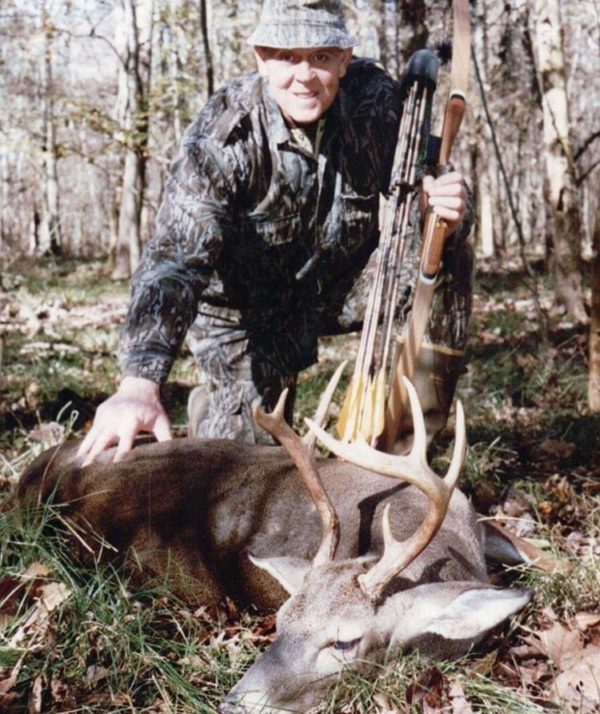
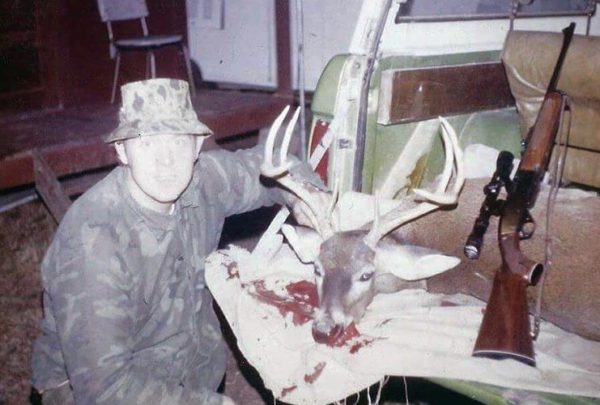
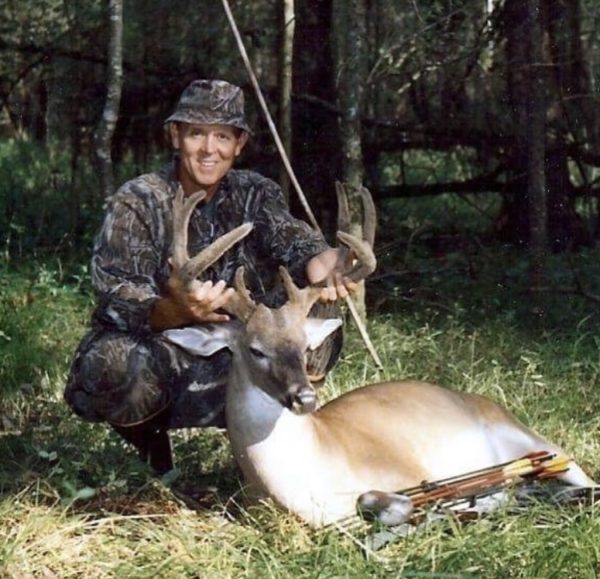
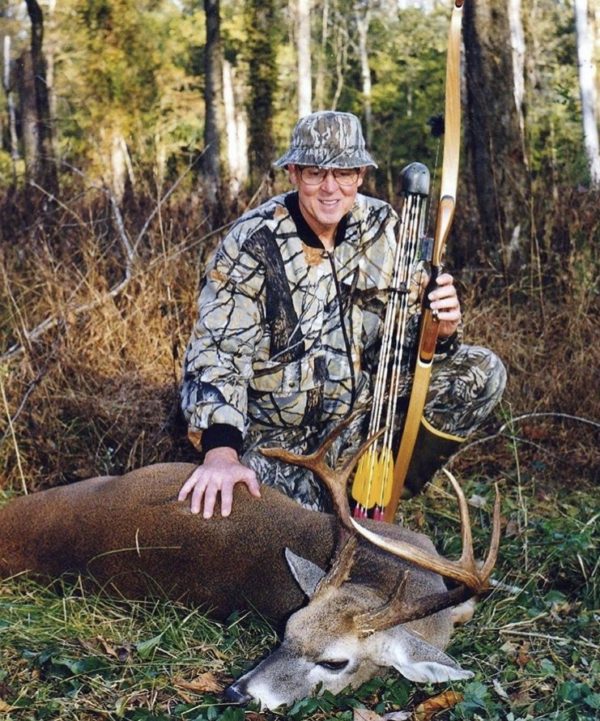
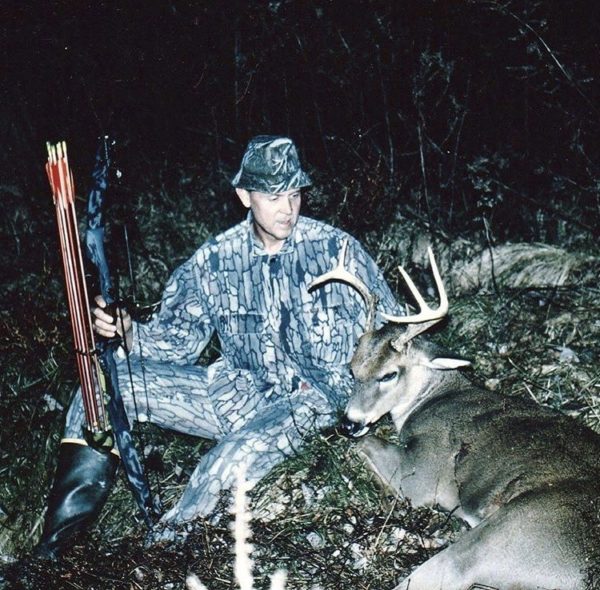




Conversation